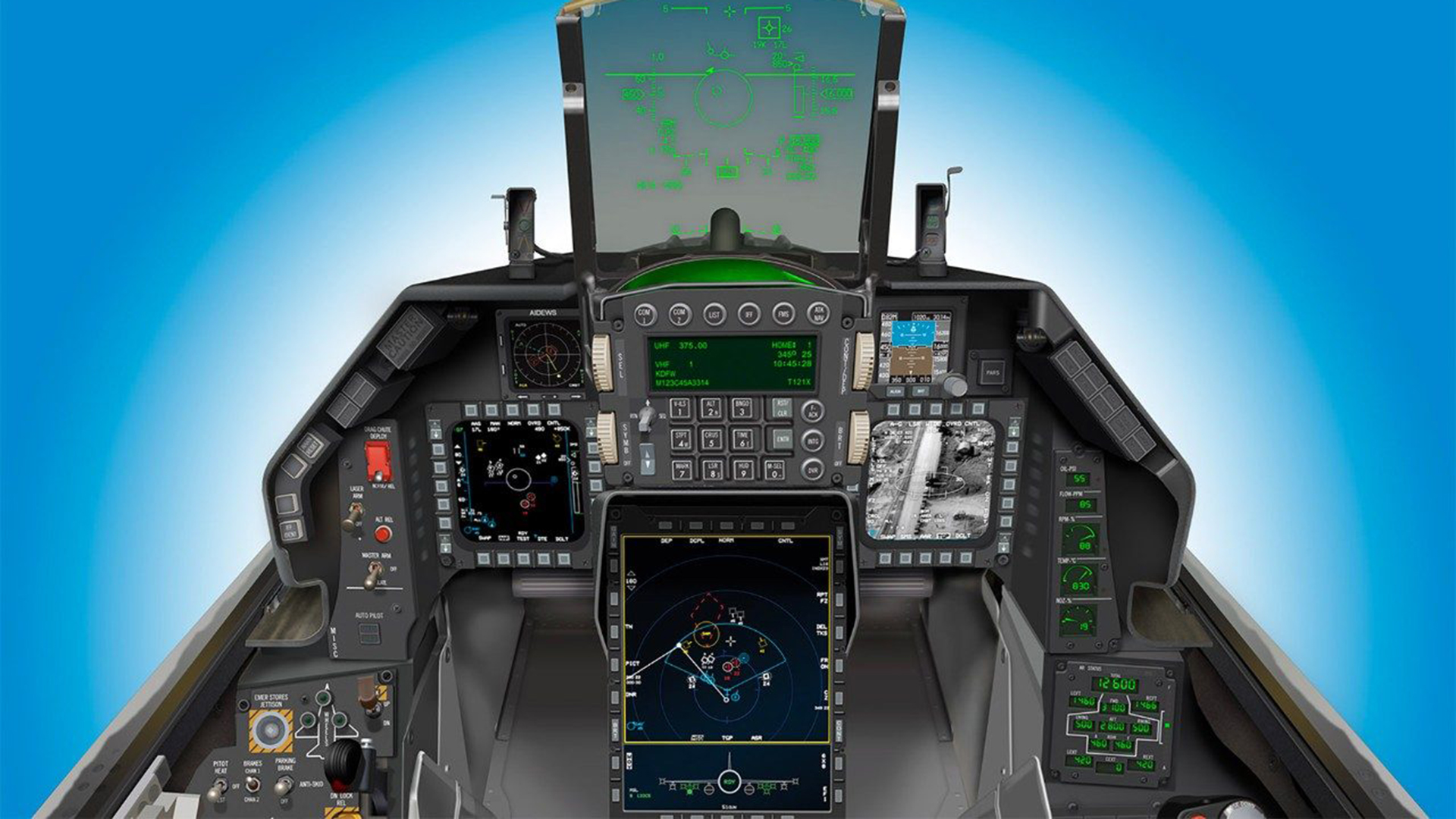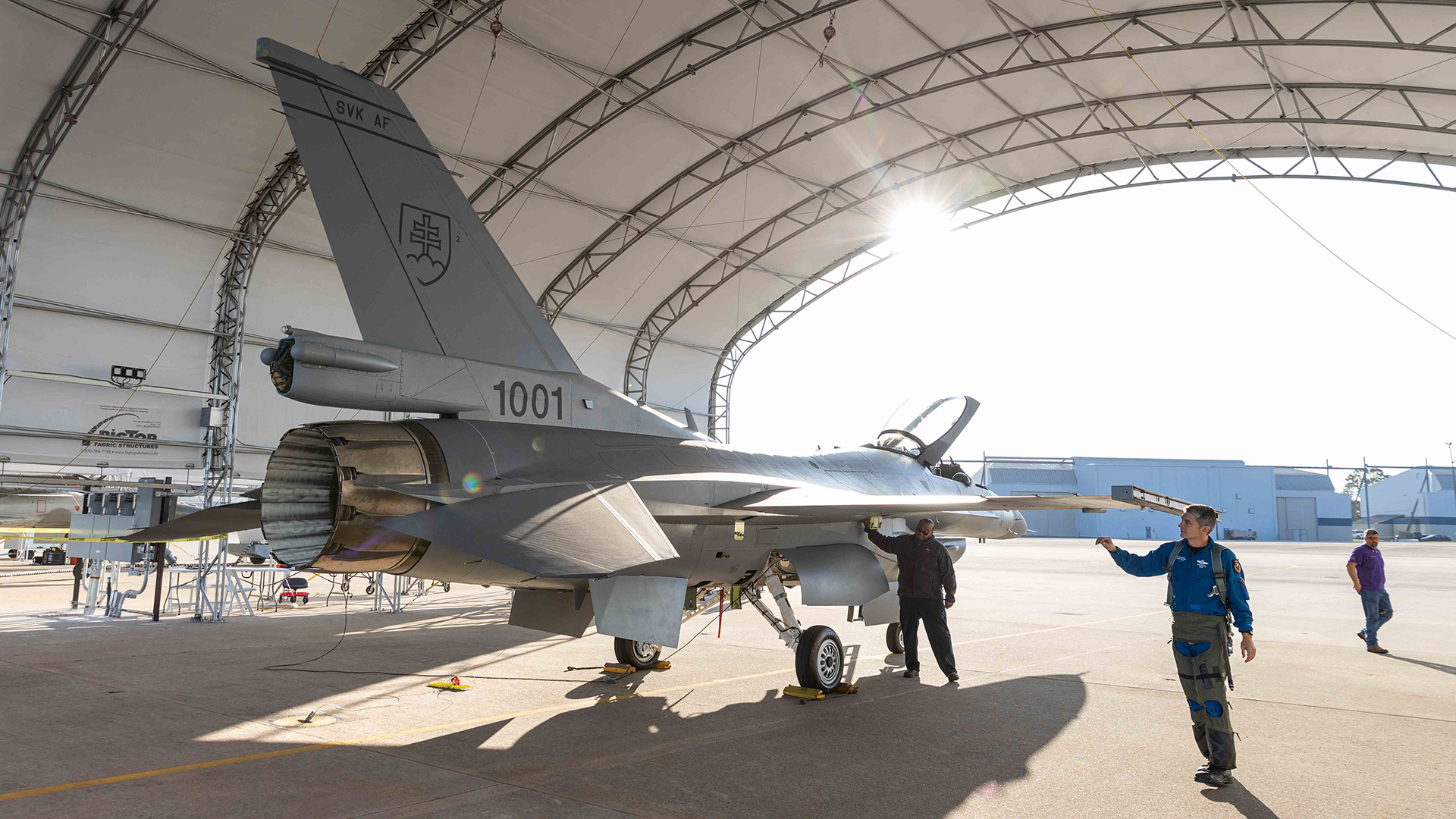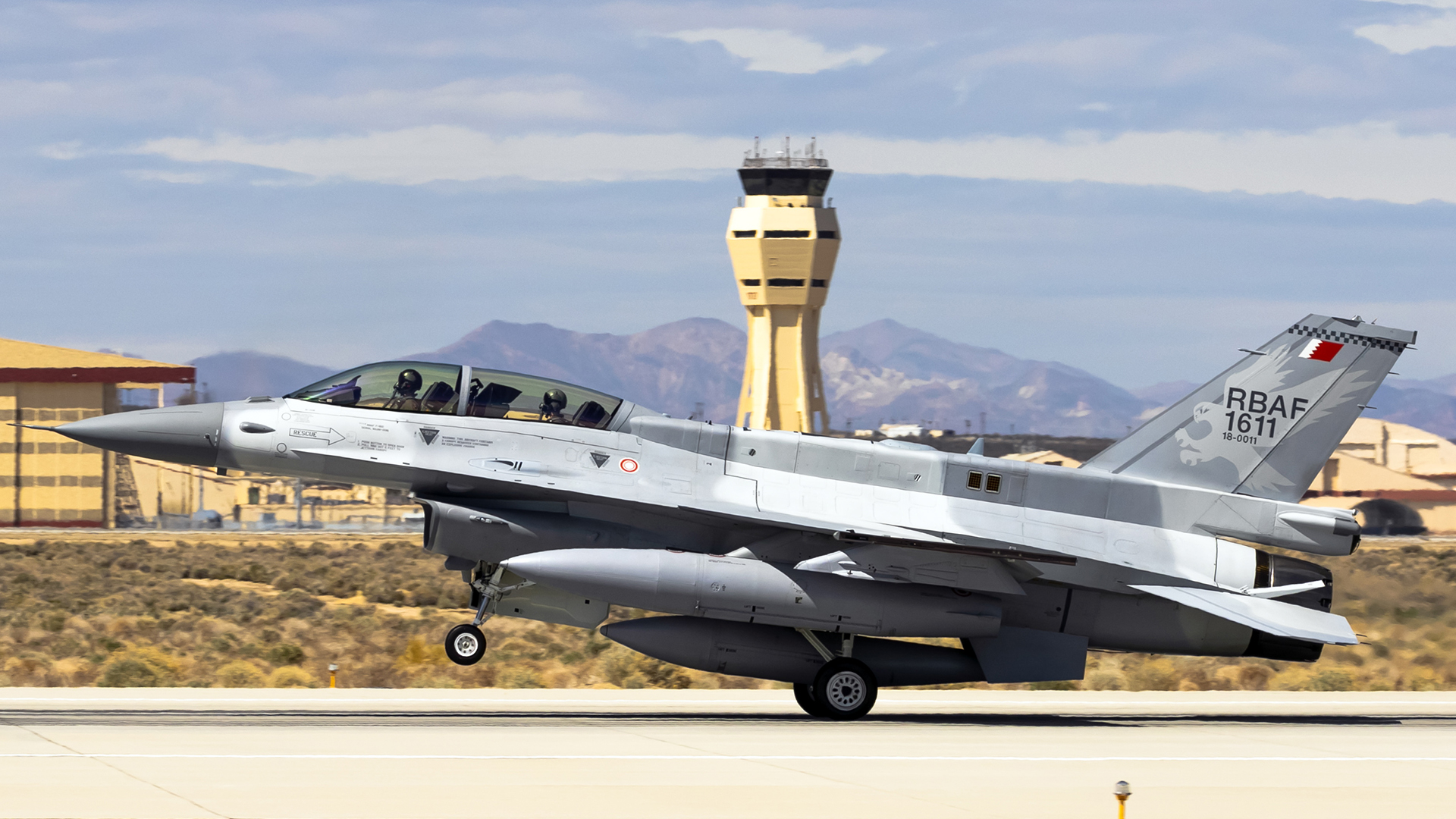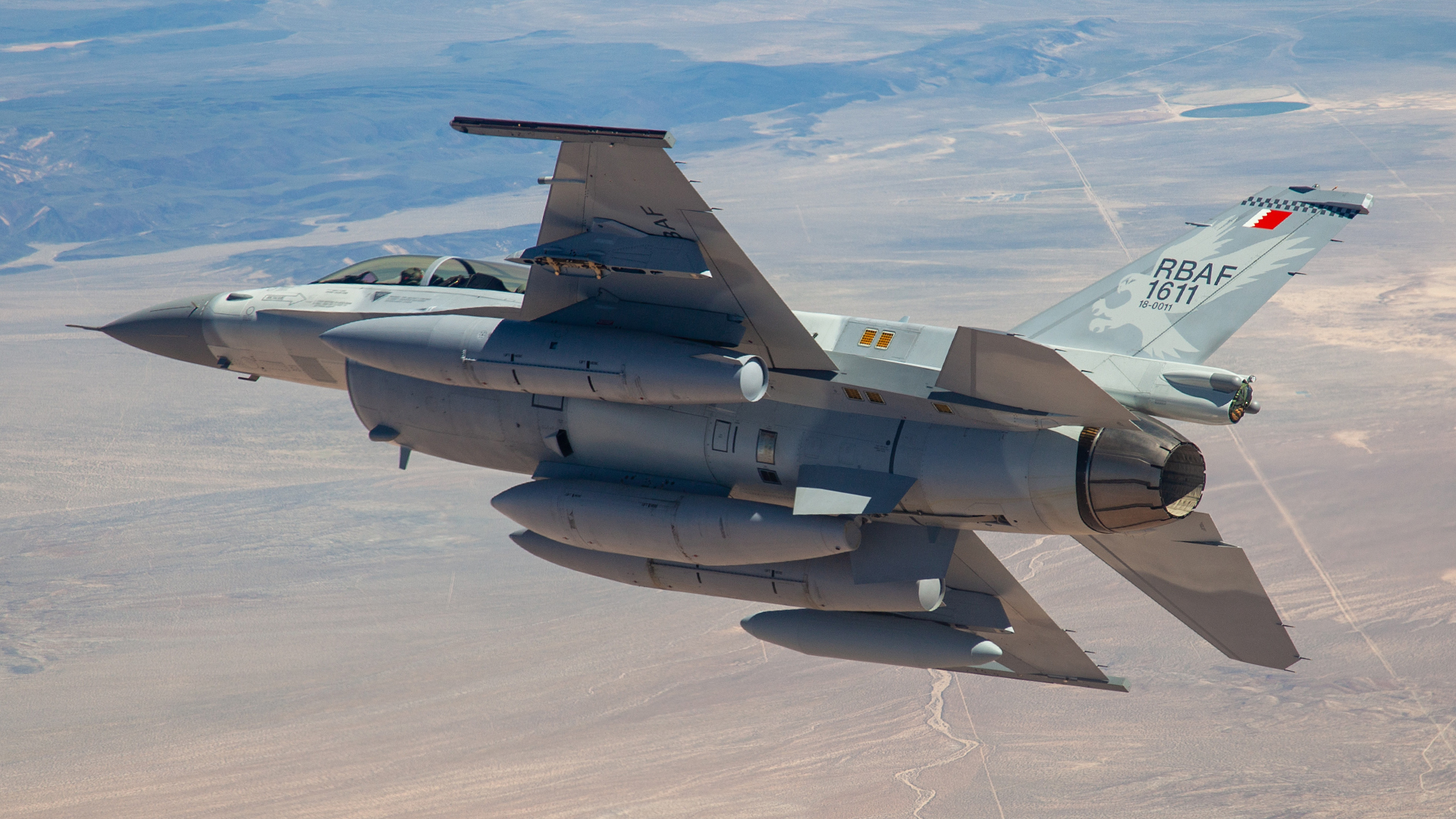Lockheed Martin and the U.S. Air Force are celebrating the 50th anniversary of the maiden flight of the F-16 Fighting Falcon, which occurred on January 20, 1974. The 50 years of F-16 operations that have followed include more than 4,500 aircraft being built and the almost continuous application and testing of emerging capabilities to keep the Fighting Falcon highly relevant over the battlefield.
Originally manufactured by General Dynamics, and now by Lockheed Martin, a healthy order book, differing customers’ needs, and new technological insertions mean that F-16 flight test remains extremely active, with current Lockheed Martin test pilot Ryan “Cujo” Blake playing a critical part in the team that helps to keep the Fighting Falcon’s talons sharp. Blake flies the latest Block 70 F-16 variant and he was kind enough to talk to us about what it’s like flying the ‘ultimate’ Viper.
The historic first flight of the F-16, at Edwards Air Force Base, California, back in early 1974 was actually unexpected, after the test pilot at the controls – Phil Oestricher – skillfully coaxed the very first YF-16 as it hopped and skipped down the runway after he cut power during a fast taxi test.
Oestricher elected to apply power and climb away from the ground to carefully fly a circuit pattern, before landing safely back on the Edwards runway. In doing so, he wrote an unexpected first chapter in the life of this remarkable fighter jet.
This video from Lockheed Martin features an interview with the late Phil Oestricher about that unofficial maiden flight back on January 20, 1974. An official first flight then followed on February 2, 1974.

At last count, 4,593 F-16s had been built. Now perhaps known as the Viper in equal measure as it is as the Fighting Falcon, more than 3,100 F-16s remain in operation in 25 countries, according to its manufacturer. F-16s have flown an estimated 19.5 million flight hours and participated in countless combat missions for a variety of countries in a huge number of military campaigns.
With a multitude of variants and different build tranches, known as Blocks, countless pilots and maintainers around the world have spent their operational careers with F-16s. With production in Fort Worth, Texas, having moved to the F-35 Lightning II, Lockheed Martin shifted F-16 production to a new plant in Greenville, South Carolina. Here, the latest Block 70/72 variant is being manufactured for a slew of customers – some first-timers with the Viper, some already loyal customers.

Lockheed Martin test pilot “Cujo” is a former Commandant of the USAF Test Pilot School at Edwards AFB and is now a key member of the team that is responsible for Block 70/72 test operations in Greenville. Here, Bahraini, Slovakian, and Bulgarian F-16s are now in production, with Taiwan to receive 66 new Vipers and Jordan have also joined the Block 70 customer list for 12 aircraft, taking the current backlog to 135 jets.
“Cujo” spoke to The War Zone to explain his work flying the F-16, and explain just how far the Viper has come in its storied 50-year history.
JH: What was your first experience of the F-16?
RB: “I’m actually a relative newcomer to the F-16. When I joined the U.S. Air Force back in 1998, I first flew the F-15E Strike Eagle. My first experience in the F-16 was actually when I went through Test Pilot School [TPS] at Edwards Air Force Base, California, in 2008. TPS uses the F-16 as one of its primary platforms for teaching students how to test, and the Block 30 F-16 was the first variant I ever flew. That was week two of TPS after just four hours of academics in the simulator. As a matter of fact, there were still some older Block 15s on the ramp that were just being phased out of service, so most of my experience was in the Block 30, as well as 40s and 50s.”
JH: What has been your greatest experience flying the F-16?
RB: “Several things stand out, but honestly it was flying the very first F-16C Block 70 out of the Greenville plant, in South Carolina, when we started producing those last year. The first one produced was a D-model, but I got to fly the inaugural flight in the first C-model for Bahrain off our production line. Taking that brand new shiny airplane, the first of its kind, and taking it through a supersonic run, doing the various engine checks, is a very exciting thing to be a part of.”

JH: Can we talk about the Block 70. What do you think are the most notable features of this jet – and do you consider it to be the ultimate Viper?
RB: “Absolutely it is. From an operator’s perspective, the AESA [Active Electronically Scanned Array] radar is the first thing that jumps out – for those who are used to the earlier blocks with mechanically-scanned radar – when you jump into a Block 70 with an AN/APG-83 you’re immediately seeing longer ranges, faster scan time, better tracks. Fighter pilots often focus on the air-to-air portion, but as a multi-role fighter all the air-to-ground capabilities of the APG-83 are the next thing that stands out, and the fact that you can multi-task with the AESA between air-to-air and air-to-surface, so you can be taking air-to-ground maps at the same time you’re doing air-to-air engagements.
This radar has SAR [Synthetic Aperture Radar] mapping capabilities, so we can get pictures of targets. Those earlier mech-scan radars were very good for their time, but the first time you saw a contact you’d better do something because even though it just popped up it’s already a threat! Whereas now with our AESA I’m going to see a target long before it’s a threat and I’ve got time to work out my tactics.

The big 6×8-inch [Center Pedestal Display or CPD] in the cockpit really is a nice piece of gear. The F-16 for a long time had two 4×4-inch displays each side of the Head Up Display, but now with the big center display [augmenting these] there’s so much more space to display different things. Whether it’s Sniper targeting pod imagery or the SAR maps I was talking about, you can put those on the big display. Everything is completely reconfigurable on those three screens, you can move anything around. You can have it so you see air-to-air and air-to-surface radar pictures both at the same time, with Sniper pod footage maybe on another display. Having that big workspace is really helpful.
The Block 70 comes as standard with Conformal Fuel Tanks [CFTs] and having that extra 3,000lbs of gas is really helpful. Of course, the CFTs can come on and off by maintenance as necessary depending on the mission you have. The Block 70 is a package that takes all of the developments from the different Blocks over the years – the Link 16, the AESA radar, the center display, the integrated avionics and new mission computer – a gigantic package of improvements.
The Block 70 started life as the F-16V upgrade for Taiwan, as well as upgrades for Singapore, Greece and South Korea who all bought into the F-16V package. There was also so much excitement from those who didn’t have existing jets available that could be upgraded, so Lockheed Martin decided to offer a brand new aircraft in the F-16V standard, adding in a 12,000 flight hour service life, the CFTs and the drag chute as standard in the new-build Block 70/72. It also comes with the choice of engine – the Block 70 has the General Electric F110-GE-129 and the Block 72 has the Pratt & Whitney F100-PW-229.
It has auto GCAS [Automatic Ground-Collision Avoidance System] too, a life-saving capability that’s been around in various portions of the Viper fleet for years and now it’s baked into these Block 70s. When you buy one of these, all the development that’s gone in the past 50 years in various portions of the Viper community is there in one package.”

JH: Does the Block 70/72 have any of the sensor fusion or any other features that have come from the F-35?
RB: “We are able to share amongst all the different platforms at Lockheed Martin, for example, the radar shares 95% software commonality and 70% hardware commonality with the F-35 radar. There’s a lot of correlation ability in the F-16V and the Block 70 that we are now able to correlate effectively the different sensors that we’ve got. Correlate those tracks, I’m seeing something with my radar, something on Link 16, interrogation returns, and those can all get melded into one track that’s being seen by the pilot. On that big center screen I can put a horizontal situation display and all of my sensors basically get correlated into one.”
JH: The United Arab Emirates’ Block 60 F-16E/F Desert Falcon was extremely advanced. Did any features of that jet make it into the Block 70/72?
RB: “A lot of the lessons we learned on Block 60 funneled into Block 70. A lot of the avionics architecture, the core functions, we ported in. There’s a lot of flight control advancements as well. Block 60 had a very early version of Auto GCAS, so a lot of that started there. Auto deep-stall recovery modes too came over from the Block 60.”

JH: What’s involved in a typical Functional Test Flight for a new jet straight off the Greenville production line?
RB: “We try to go into all the different regimes that the operator would go into. Every time we take an airplane up for its first flight we make sure it is safe to fly. Generally, it takes two flights to go through everything, but the first is focused on safety-of-flight type things. We will immediately go above the field and make sure the landing gear retracts, that the engine is working correctly, the cabin pressurization, those things that have got to work immediately. We do a lot of engine checks right over the field so if we saw some kind of problem we could immediately come down and land.
Then generally we’ll take it up to 40,000ft and go supersonic, clear out the envelope for the operator. I know it can go well past supersonic, it’s maneuverable at supersonic speed and we can do various maneuvers out there at Mach 1.5 to make sure it’s performing as it should. Generally, when I land from that first flight I can say that it’s an airworthy airplane. The second sortie is where we are focused on avionics. We check out the radar – get an air-to-air target for checking our detection ranges, the weapon engagement zones, the navigation, Auto GCAS, all of those kinds of things.”
JH: If you could fly any mission in a Viper right now, what would you go and do?
RB: “Doing test work in the F-16 – the flight control system is amazing and very stable, but like I said it’s got that deep stall mode. What we call departure high angle-of-attack testing is some of the most exciting testing you can do. Out with asymmetrically loaded weapons, trying to do something an inexperienced wingman might do and accidentally put the jet out of control. There’s excitement there just doing the actual test but then knowing that it’s going to go straight into the flight manual. We are proving that a young pilot who is new to the F-16 with maybe just 15 hours can do BFM [Basic Fighter Maneuvers] and we don’t think they can go out of control. Or maybe saying that we found something in the handling and we’re going to put some instructions in the manual for the pilot to ensure that they never get into that same spot.”

Fifty years on from its maiden flight, the F-16 is still being developed, with critical test work ongoing to ensure the Viper stays at the leading edge of fighter aircraft technology. Two Bahraini Block 70 F-16s are currently at Edwards AFB for testing with the resident 416th FLTS, right back at the place where it all started some 50 years ago.
Despite its age, and the newer-generation F-35 that is in production, customer interest in the F-16 shows no sign of abating, with Lockheed Martin expecting to deliver between 19-21 aircraft this year while the order book continues to grow with an impressive backlog for the new standard of Viper.
So, happy 50th birthday to the F-16, undoubtedly with many years of service still to come from the shiny new Block 70/72 jets that are rolling off the line in Greenville.
Contact the editor: tyler@thedrive.com
